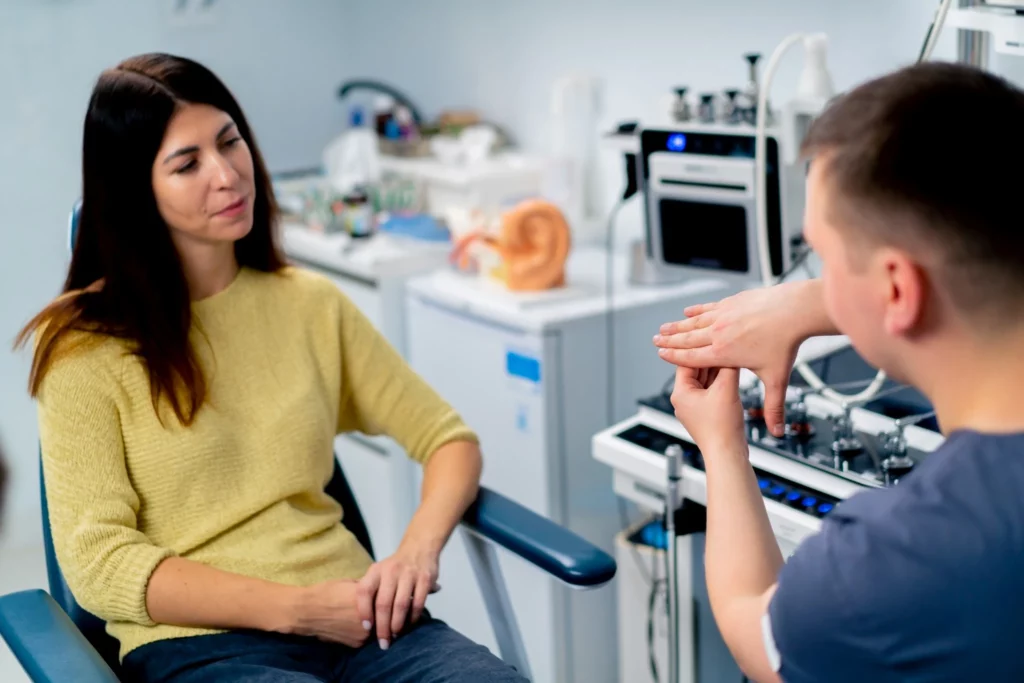At Texas Sinus and Snoring, we have developed an approach to diagnosing and treating sinusitis, nasal obstruction, snoring and sleep apnea that is second to none.
I spent 16 years as a surgeon in the US Navy and as a professor teaching our young surgeons how to operate. As a seasoned professional, I continue to hone my skills and my methodology to help everyday people breathe better and get a better night’s sleep.
A small subset of people approach our practice with the idea that I can somehow diagnose their problem without running any tests or without doing any examination of the interior of their sinonasal tract.
The flip side of this is that I see people every day who have been seeing their so-called specialists for months or years and have never been properly diagnosed precisely because their doctor has never done the appropriate studies on them to make the diagnosis.
Diagnosing and treating sinonasal issues such as sinusitis and snoring requires a thorough understanding of the nasal anatomy and underlying causes of symptoms.
Two essential diagnostic tools in the evaluation of these conditions are the sinus CT scan and the endonasal scope. I use them extensively in my practice to quickly and accurately diagnose problems causing the symptoms people commonly complain of.
This essay will explore the importance of utilizing both imaging techniques in diagnosing and treating sinusitis, snoring, and other sinonasal issues. Additionally, it will discuss the demographics of chronic sinusitis in America, the relationship between nasal obstruction and snoring, as well as the strengths and limitations of sinus CT scans and endonasal scopes in identifying specific sinonasal conditions.
Demographics of Chronic Sinusitis in America:
Chronic sinusitis is a prevalent condition affecting millions of Americans each year, with considerable impacts on the quality of life and healthcare costs. It is estimated that over 30 million adults in the United States are diagnosed with chronic sinusitis annually.
This inflammatory condition of the paranasal sinuses results in symptoms such as nasal congestion, facial pain, postnasal drip, and reduced sense of smell.
While acute sinusitis is usually caused by bacterial or viral infections, chronic sinusitis may result from various factors, including allergies, anatomical abnormalities, or underlying immune disorders.
Understanding the demographic factors associated with chronic sinusitis can help tailor diagnostic and treatment approaches for affected individuals.
Connection Between Nasal Obstruction and Snoring:
Nasal obstruction has been recognized as a significant contributing factor to snoring and obstructive sleep apnea. When the nasal passages are partially or completely blocked, airflow becomes turbulent during breathing, resulting in vibrations of the soft tissues in the airway and producing the characteristic sound of snoring.
Chronic conditions such as nasal congestion, deviated septum, nasal polyps, or enlarged turbinates can lead to nasal obstruction, exacerbating snoring and sleep-disordered breathing.
Addressing nasal obstruction through appropriate diagnosis and treatment methods is crucial in managing snoring and improving sleep quality in affected individuals.
Role of Sinus CT Scan in Diagnosing Chronic Sinusitis:
Sinus CT scan, also known as computed tomography of the sinuses, is a valuable imaging modality for evaluating the paranasal sinuses and diagnosing chronic sinusitis.
CT scans provide detailed cross-sectional images that can reveal the extent of sinus inflammation, mucosal thickening, polyps, or other structural abnormalities within the sinuses.
Compared to conventional X-rays or nasal endoscopy, sinus CT scans offer superior visualization of sinus anatomy and pathology, making them particularly effective in diagnosing chronic sinusitis.
Radiologists can assess the severity and distribution of sinus disease based on CT findings, guiding treatment decisions and surgical planning for patients with persistent sinonasal symptoms.
Role of Endonasal Scope in Diagnosing Allergy and Nasal Polyps:
Endonasal scope or nasal endoscopy is a minimally invasive procedure that allows direct visualization of the nasal cavity and nasopharynx using a thin, flexible instrument equipped with a light source and camera.
Endoscopic examination of the nasal passages is essential in diagnosing conditions such as allergic rhinitis, nasal polyps, and anatomical abnormalities that contribute to nasal obstruction.
Unlike sinus CT scans, endonasal scopes provide real-time views of the nasal mucosa, allowing for the detection of subtle changes, allergic reactions, or polypoid growths that may not be apparent on imaging studies alone. By combining endonasal scope findings with patient history and allergy testing, otolaryngologists can accurately identify the underlying causes of nasal obstruction and tailor treatment plans accordingly.
Conclusion:
In the evaluation and management of sinonasal conditions, the combined use of sinus CT scan and endonasal scope offers a comprehensive approach to diagnosing chronic sinusitis, snoring, and other nasal issues.
A Sinus CT scan provides detailed anatomical information and aids in identifying sinus-specific pathology, making it an invaluable tool for assessing chronic sinusitis and guiding treatment decisions.
On the other hand, endonasal scope enables direct visualization of the nasal cavity, facilitating the diagnosis of conditions such as nasal polyps, allergic rhinitis, and septal deviation that contribute to nasal obstruction and associated symptoms like snoring.
By leveraging the strengths of both diagnostic modalities, healthcare providers can achieve accurate diagnoses and individualized treatment plans for patients with sinonasal disorders, ultimately improving outcomes and quality of life for those affected by chronic sinusitis, snoring, and related conditions.






